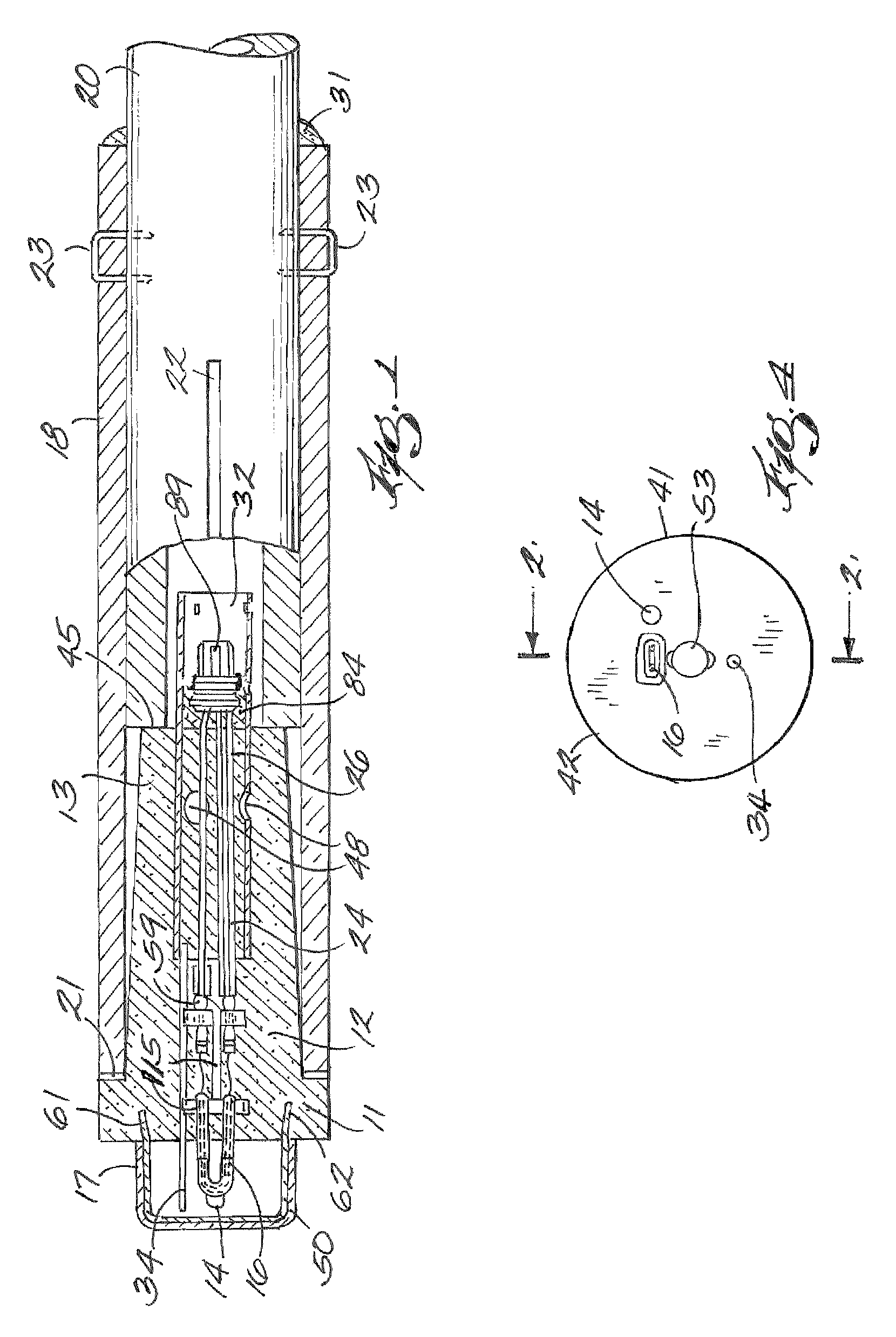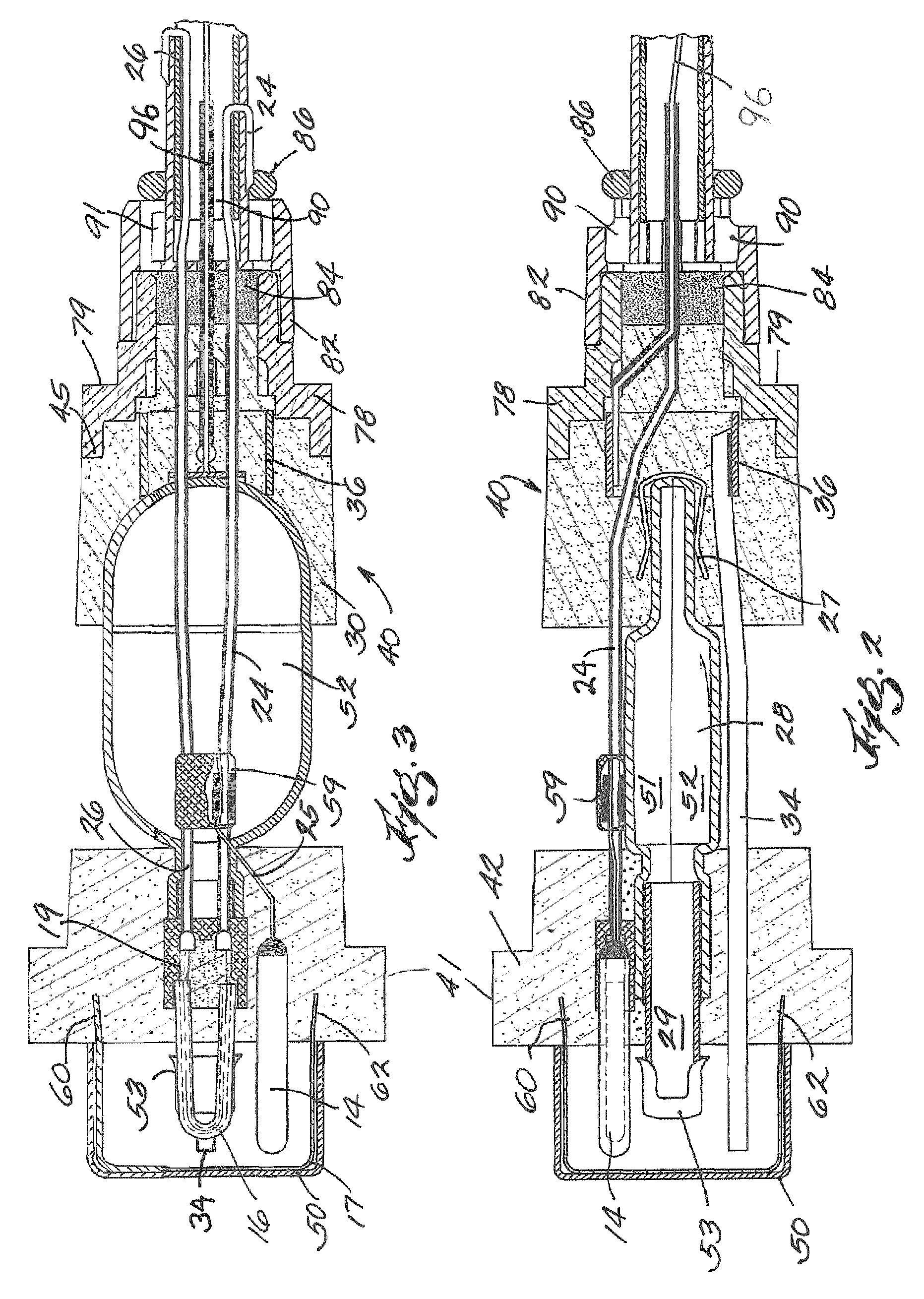Immersible oxygen sensor for molten metals
a technology of oxygen sensor and molten metal, which is applied in the field of molten metal immersion probes, can solve the problems of increasing production cost, increasing production time, and inability to consistently provide the quick, accurate, repeatable oxygen content and temperature readings required for today's demanding manufacturing processes, and achieves the effects of enhancing the quick release of molds and samples from the probe body, reducing the amount of resin in the blend, and being easy to frangibl
- Summary
- Abstract
- Description
- Claims
- Application Information
AI Technical Summary
Benefits of technology
Problems solved by technology
Method used
Image
Examples
Embodiment Construction
[0020]In accordance with the embodiment of the invention shown in FIG. 1, probe 10 includes a first gas permeable sand-resin, generally cylindrically shaped body 12 formed of a baked gas permeable sand-resin mixture. As shown the baked sand-resin body 12 has a stem portion 13 of a size adapted to fit within the interior of paperboard sleeve 18 and a radially raised or enlarged portion 11 which serves as a stop for the immersion end of paperboard sleeve 18. The abutting surfaces of the sand body and the end surface of the paperboard sleeve 18 should be totally sealed gas tight. Thus a ceramic cement 21 or the like is used between these abutting surfaces. The end surface 45 is abutted by the end of smaller tube 20 but it is not adhered thereto. Any other sand body contact with the paper tubes 18 or 20 internal to the tubes should not be gas tight. Tubes 18 and 20 are loosely fitted in order to allow gas flow therebetween. The embodiment of FIG. 1 (as well as FIG. 6-7) is used in insta...
PUM
| Property | Measurement | Unit |
|---|---|---|
| weight % | aaaaa | aaaaa |
| temperature | aaaaa | aaaaa |
| temperature | aaaaa | aaaaa |
Abstract
Description
Claims
Application Information
 Login to View More
Login to View More - R&D
- Intellectual Property
- Life Sciences
- Materials
- Tech Scout
- Unparalleled Data Quality
- Higher Quality Content
- 60% Fewer Hallucinations
Browse by: Latest US Patents, China's latest patents, Technical Efficacy Thesaurus, Application Domain, Technology Topic, Popular Technical Reports.
© 2025 PatSnap. All rights reserved.Legal|Privacy policy|Modern Slavery Act Transparency Statement|Sitemap|About US| Contact US: help@patsnap.com



